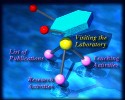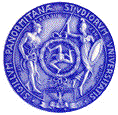| NANOCAT |
Production of better than existing pharmaceuticals, healthy food ingredients, perfumes, other fine chemicals, which are of immense importance for improving quality of life, is often limited by low selectivity in their synthesis over heterogeneous catalysts. Selectivity of these catalysts, bearing metals of nanoparticle size, could be enhanced by carefully adjusting the size and environment of metal nanoparticles. The project is aimed to study the influence of metal nanoparticle size and its environment on catalytic behaviour in some representative reactions of industrial importance and, finally, to establish the fundamental knowledge on atomic/molecular level relating the nanocatalyst synthesis and behaviour. The model reactions represent selective oxidation, chemo- and enantioselective hydrogenations as well as catalytic isomerisation reactions, where the use of conventional supported catalysts yields to too low selectivities of the desired products. By changing the size, shape and local environment of the nanostructures, their functionality may be controlled. To achieve the main goal, following tasks will be performed: i) development and physico-chemical characterisation of Ru, Pt, Pt-Au and Pd nanoparticles of 1-10 nm diameter incorporated in inorganic and organic functionalised and non-functionalised micro-mesoporous matrices, polymer or carbon nanofibers, ii) catalyst testing in hydrogenation, oxidation and isomerisation reactions, yielding the intermediates in used for production of biologically active compounds, healthy food incredients and parfumes, iii) development of reaction mechanisms by combination of diffusion and kinetic modeling together with time dependent Monte Carlo - quantum chemical calculations. The obtained results will allow finding correlations between the nanoparticle size-shape-environment and catalytic behavior. Possibility of preventing metal leaching by incorporating metal nanoparticles in matrices allowing reuse will be investigated.
 Kinetics and Catalysis FIN
Kinetics and Catalysis FIN
 Tver University RU
Tver University RU
 CCR Jussieu FR
CCR Jussieu FR
 Polymer Science Group GR
Polymer Science Group GR
 Inorganic and Analytical Chemistry IT
Inorganic and Analytical Chemistry IT
 Inorganic Chemistry and Catalysis NL
Inorganic Chemistry and Catalysis NL